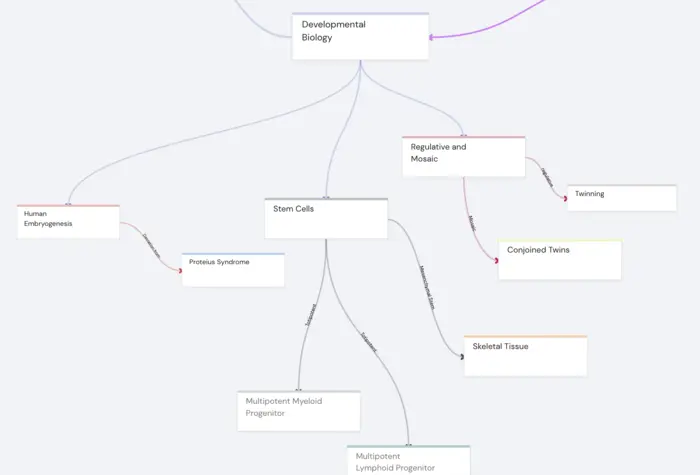Introduction: The Unique Gender Dynamics of Chinese Pronouns
In any language, the use of pronouns is a subtle yet powerful reflection of societal norms and cultural dynamics. It's like a linguistic mirror, reflecting the nuances of gender roles and identities. When it comes to Chinese pronouns and their gender dynamics, the mirror reveals a fascinating picture. Unlike many languages that have gendered pronouns, spoken Chinese has a unique characteristic: it uses a single, gender-neutral pronoun, tā, for all third-person references. However, when you switch to the written form, you'll encounter three different characters for 'he', 'she', and 'it' - all pronounced 'tā'.
This intriguing discrepancy between spoken and written Chinese opens up a captivating exploration of gender dynamics in the Chinese language, the historical evolution of Chinese pronouns, the emergence of modern gender-neutral pronouns, and their impact on Chinese language learners. Let's delve into this fascinating world of Chinese pronouns and unveil the story they tell about gender dynamics in Chinese society.
Whether you're a lifelong learner trying to master Mandarin or simply curious about the cognitive science behind language learning, understanding the gender dynamics of Chinese pronouns can offer valuable insights and strategies for your learning journey. So, let's traverse the exciting contours of Chinese pronoun usage together!
The Historical Evolution of Chinese Pronouns
Diving into the history of Chinese pronouns, we find a journey of evolution shaped by socio-cultural shifts and foreign influences. From gender-neutral pronouns to the introduction of gender-specific pronouns, the language has significantly evolved, reflecting the changing times.
The Pre-20th Century Gender-Neutral Pronoun: Tā
Originally, Chinese pronouns did not adhere to a gender binary. The language was largely genderless, with a single third-person pronoun, tā 他, serving as a gender-neutral form. Whether referring to "he," "she," or "it," Mandarin Chinese made no distinction – a simplicity that is a breath of fresh air for learners used to the gendered pronouns of other languages.
The Introduction of Gender-Specific Pronouns in the Early 20th Century
However, the early 20th century saw a significant change. During the May Fourth Movement in 1919, figures such as Lu Xun and Zhou Zuoren began suggesting the creation of new characters for male and female third-person pronouns. The poet and linguist Liu Bannong was the first to propose the use of 她 as the feminine form, while retaining 他 as the masculine form. This proposal was met with debate, but the idea of introducing new characters gained traction, marking a significant shift in the Chinese language.
The Influence of Western Languages on Chinese Pronouns
Interestingly, the evolution of Chinese pronouns was heavily influenced by Western languages. The Chinese language reformers, instead of preserving the naturally gender-inclusive usage of their own language, adopted the hierarchical gender pronoun structure of English. This shift is a fascinating example of how one language can influence another, not just through vocabulary borrowing, but through grammatical structure changes.
However, this change was confined to the written language, and the spoken form remained unaltered. In contemporary spoken Mandarin, the third-person pronoun tā is still used gender-neutrally, reflecting the intriguing discrepancy between the spoken and written forms of the language.
This journey through the historical evolution of Chinese pronouns provides a foundation for understanding the current state of gender dynamics in the Chinese language. As we move forward, we'll delve into the current state of Chinese pronouns and the ongoing efforts to promote gender neutrality in modern Chinese society.

The Current State of Chinese Pronouns: Gendered in Writing, Gender-Neutral in Speech
In the world of linguistics, the Chinese language presents a fascinating paradox: while gender distinctions are clear in written form, they disappear when spoken. This intriguing dynamic is particularly evident in the use of third-person pronouns.
The Pronunciation of Third-Person Pronouns in Spoken Mandarin
In spoken Mandarin, the third-person pronoun "tā" is a one-size-fits-all solution, representing "he", "she", and "it". The catch? All these pronouns are pronounced in the same way: tā. As such, Mandarin speakers do not need to keep track of the gender of the person they are talking about, something that learners from English-speaking backgrounds might find refreshingly liberating.
The Gender Distinctions in Written Chinese: 他 (he), 她 (she), 它 (it)
While spoken Mandarin lets you off the hook for gender distinctions, the written language is a different ball game. Here, we encounter three distinct characters for "he", "she", and "it": 他, 她, and 它. All pronounced as tā, these characters represent the masculine, feminine, and neuter third-person pronouns, respectively.
The Discrepancy Between Spoken and Written Chinese Pronouns
The divergence between spoken and written Chinese pronouns is a clear example of how the same language can exhibit different characteristics in its written and spoken forms. Despite the gender-specific characters in written Chinese, the language in practice—evidenced by how people actually speak—leans towards a single, gender-neutral pronoun. This discrepancy is a clear demonstration of a fundamental principle in linguistics: spoken language takes precedence over written language.
In essence, the current state of Chinese pronouns underscores the fascinating dynamics of gender in the language. While the written form acknowledges gender distinctions, the spoken language remains staunchly gender-neutral. This unique aspect of Chinese pronouns is not only an intriguing subject for linguists but also a critical consideration for Mandarin learners navigating the complexities of the language. As we delve deeper into the world of Chinese pronouns, we'll explore the emerging trends in modern Chinese society and their implications for the future of gender dynamics in the language.
The Emergence of Gender-Neutral Pronouns in Modern Chinese Society
With the world progressively embracing gender-neutral and gender-inclusive pronouns, the Chinese society has not been left behind. The fascinating evolution of Chinese pronouns continues in the face of emerging gender dynamics, with Chinese queers and gender activists championing the cause.
The Advocacy for More Gender-Friendly Pronouns by Chinese Queers and Gender Activists
Much like the push for greater gender equality globally, Chinese queers and gender activists have been increasingly advocating for more gender-friendly Chinese pronouns. This drive mirrors the international move towards gender-neutral and gender-inclusive pronouns like “they/them” or “ze/zir” in English. The intent is to promote inclusivity and recognition of diverse gender identities within the Chinese language and culture.
The Use of "X也" and "TA" by Genderfluid, Genderqueer, and Nonbinary Individuals
In this quest for inclusivity, a couple of new pronouns have emerged and are being adopted by some Chinese-speaking communities. For instance, the English letter 'X' has been proposed as a genderfluid radical to create a unique pronoun: "X也". This inventive approach can be seen as a reaction to the lack of a universally agreed-upon non-binary third person pronoun in Chinese.
Another increasingly common pronoun is the pinyin romanization "TA". This sidesteps the gender-specific characters 他 (he) and 她 (she), both pronounced as 'tā'. "TA" is being used by some genderfluid, genderqueer, or nonbinary individuals as well as within queer and feminist online communities in China.
The Challenges in Accepting Newly Created Pronouns in Chinese Society
While these developments mark a significant step towards gender inclusivity, they are not without challenges. The adoption of these new pronouns requires a top-down process, including acceptance by major software companies and the Chinese government, a feat easier said than done.
The lack of widespread recognition of the transgender community in China further compounds the challenge. A significant number of Chinese still perceive being transgender as a form of mental illness, which hinders the acceptance of gender-neutral pronouns.
Despite the hurdles, the emergence of gender-neutral pronouns in modern Chinese society is a testament to the evolving gender dynamics within the language. This ongoing evolution not only provides a rich cultural context for learning Mandarin, but it also has profound implications for the future of gender inclusivity in Chinese society.

The Impact of Gender Pronouns on Chinese Language Learners
The intricate dance of gender dynamics in Chinese pronouns is not just a cultural phenomenon—it has tangible effects on language learners. From English-speaking Mandarin learners to Chinese speakers learning English, the unique characteristics of Chinese pronouns present interesting challenges and opportunities.
The Common Mistakes Made by Chinese Speakers in English Due to Lack of Gender Distinctions
The gender-neutral nature of spoken Mandarin often leads to an intriguing misstep for Chinese speakers learning English: mixing up the gender of third-person singular pronouns. This is because English grammar necessitates the mental tracking of a person's gender, a concept that doesn't exist in Chinese. As a result, Chinese speakers may often use "he" and "she" interchangeably and without realizing their mistake. This pattern reveals how grammar can subtly shape our thought habits and reflects the challenges of switching between two grammatically distinct languages.
The Use of Pinyin "ta" to Avoid Gender Issues in Chinese Writing
Interestingly, the gender dynamics of Chinese pronouns also influence writing practices. Given the gender distinctions in written Chinese, some Chinese speakers opt to use the Pinyin "ta" in their writing. Doing so allows them to sidestep the gender-specific pronouns 他 (he), 她 (she), and 它 (it)—all pronounced "ta"—and retain the gender neutrality of spoken Mandarin. This practice further underscores the discrepancy between spoken and written Chinese and may even point to a future trend in Chinese writing.
The Use of Traverse App and Mandarin Blueprint for Learning Mandarin Chinese
As a lifelong learner and explorer of Mandarin, you can leverage innovative tools like the Traverse app and Mandarin Blueprint to navigate the fascinating gender dynamics in Chinese pronouns. These resources provide comprehensive guides to Mandarin grammar, including the nuanced use of pronouns. The Traverse app, for example, offers an intuitive approach to learning Mandarin, allowing you to understand the fundamental components of the language, such as the role of verbs, adverbs, and adjectives.
Meanwhile, Mandarin Blueprint can help you conquer the art of Mandarin by debunking common myths about learning the language and providing effective strategies to retain information longer. Through these platforms, you can build your proficiency in Mandarin and appreciate the language's unique gender dynamics, making your learning journey both enlightening and engaging.
In the end, understanding and mastering the use of Chinese pronouns is a crucial step in your Mandarin learning journey. It not only enriches your grasp of the language but also offers you a glimpse into the evolving gender dynamics within the Chinese language and society.

The Future of Chinese Pronouns: A Move Towards Gender Neutrality?
As language evolves, so does society. This is particularly true in the case of Mandarin Chinese, where a growing trend among young Chinese people signals a potential shift towards a more gender-neutral language. This section delves into the future of Chinese pronouns, exploring the growing trend of using pinyin "ta" as a character, the potential for written Chinese to align more closely with spoken language, and the hope for gender-neutral pronouns to become mainstream in Chinese society.
The Growing Trend Among Young Chinese to Use Pinyin "ta" as a Character
While the gendered pronouns of 他 (he), 她 (she), and 它 (it) are still widely used in written Chinese, a fascinating trend is emerging among the younger generation. Young Chinese people have begun to use pinyin "ta" as a character to avoid the gender-specific issues inherent in traditional Chinese characters. This trend is most noticeable on social media platforms and in other digital communication, offering a fresh take on the traditional gender-specific pronouns.
The Potential for Written Chinese to Align More Closely with Spoken Language
Given that spoken Chinese does not specify gender through pronouns, there is potential for written Chinese to mirror this gender neutrality. The utilization of pinyin "ta" is a step towards this alignment, maintaining the gender neutrality that spoken Chinese offers.
This approach would also reduce the discrepancy between spoken and written Chinese, making it easier for Mandarin learners to grasp the language's nuances. As a company dedicated to helping learners navigate these complexities, Traverse endorses any efforts that simplify and streamline the language learning process.
The Hope for Gender-Neutral Pronouns to Become More Mainstream in Chinese Society
While the use of pinyin "ta" is still relatively new, it represents a hope for more gender-neutral pronouns to become mainstream in Chinese society. This shift could reflect the evolving understanding and acceptance of diverse gender identities in China, similar to the use of gender-inclusive language in many other languages worldwide.
Chinese queers and gender activists are leading the charge in advocating for more gender-friendly pronouns. Their efforts, combined with the growing trend of using pinyin "ta," could pave the way for a more inclusive Chinese language, both in speech and writing.
In conclusion, the future of Chinese pronouns seems to be moving towards gender neutrality. While there are still challenges to overcome, the efforts of younger generations and gender activists offer a glimmer of hope for a more inclusive and diverse Chinese language. The continuous evolution of Chinese pronouns and their gender dynamics is a testament to the fluid nature of language and society, something that every Mandarin learner should be aware of and embrace.
Conclusion: The Ongoing Evolution of Chinese Pronouns and Gender Dynamics
As we journey through the fascinating world of Chinese pronouns, we realize that language is more than just a tool for communication; it is a reflection of society, culture, and history. The Chinese language, with its unique gender dynamics and pronoun usage, offers valuable insights into the societal norms and cultural shifts of China.
The evolution of Chinese pronouns from the pre-20th-century gender-neutral pronoun "tā" to the introduction of gender-specific pronouns in the early 20th century, and now, the emerging trend of using gender-neutral pronouns among young Chinese, highlights the language's adaptability. The Chinese language is not static; it evolves with the society that uses it. The recent efforts by gender activists and the LGBTQ+ community to push for more gender-friendly pronouns like "X也" and "TA" in the Chinese language is a testament to this ongoing evolution.
This dynamic nature of the Chinese language can pose challenges for learners. However, it also offers a unique opportunity to understand and appreciate the rich tapestry of Chinese culture and society. For Mandarin learners, it's crucial to go beyond the textbook understanding of the language and delve into the real-world usage and implications of Chinese words and phrases.
Platforms like the Traverse app and Mandarin Blueprint offer a comprehensive learning experience, integrating the cultural and societal aspects of the Chinese language. They provide a holistic approach to learning Mandarin, ensuring learners are not just proficient in the language, but also well-versed in the cultural nuances and societal contexts that the language encapsulates.
As we look to the future, the trend towards gender neutrality in Chinese pronouns seems promising. The increasing acceptance of Pinyin "ta" as a character by younger generations and the potential for written Chinese aligning more closely with spoken language could lead to a more inclusive and diverse Chinese language. This shift could also offer a more straightforward learning experience for Mandarin learners, reducing the discrepancies between spoken and written Chinese pronouns.
However, the road to a more gender-neutral Chinese language isn't straightforward. Societal norms, government regulations, and traditional values pose significant challenges. Yet, as history has shown us, language adapts and evolves, reflecting the changing society that uses it. The search for non-binary pronouns in Chinese continues, presenting an exciting frontier in the world of language and gender dynamics.
The evolution of Chinese pronouns and their gender dynamics is a fascinating journey, one that Mandarin learners should eagerly embrace. By understanding these shifts, learners can gain a deeper appreciation of the Chinese language, enhancing their learning journey. As the Chinese saying goes, "学无止境" (Xué wú zhǐ jìng) - learning has no end. So, let's continue to learn, adapt, and grow with the evolving Chinese language.

